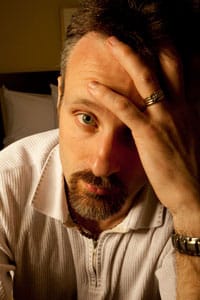Depression is a serious psychiatric disorder that affects millions of people at some point in their lives. It can be a brief episode in response to an obvious stressor or a recurring, chronic and even lifelong battle. The impact of depression is not to be underestimated, as it is ranked by the World Health Organization as the leading cause of disability. Depression can often be successfully treated with psychotherapy, medication, or a combination of the two. Sadly, however, a significant percentage of individuals with depression never receive treatment. Depression comes in many shapes and sizes. Understanding the specific type helps clinicians determine the best course of treatment for the patient. For example, while unipolar depression and bipolar depression refer to major depression, differentiating between the two is important when it comes to medication. A safe form of treatment for someone with unipolar depression could trigger a manic episode in a person with bipolar depression. Here is a brief look at the types of depression. Many of these are clinical terms or “qualifiers,” (e.g. secondary depression), while others are official diagnoses (e.g. dysthymic disorder). Major depression – Major depressive disorder is one of the most common diagnoses when it comes to mood disorders. According to the National Institutes of Health, major depressive disorder affects about 14.8 million American adults, or about 6.7 percent of the U.S. population age 18 and older in a given year. It can range from mild to severe, and may be a single episode or recurrent episodes. Symptoms must occur consistently for at least two weeks in order to meet the diagnostic criteria for major depressive disorder. Bipolar depression – This refers to the major depressive mood episodes that alternate with periods of mania or hypomania in individuals with bipolar I or bipolar II disorder. Symbyax and Quetiapine – both “atypical antipsychotic” medications – have been approved by the FDA to treat bipolar depression. Unipolar depression – This term is sometimes used to refer to major depression in someone with no history of manic or hypomanic episodes. Seasonal depression – Typically referred to as seasonal affective disorder, this type of depression occurs in a seasonal pattern. Most sufferers are symptomatic during the late fall and winter, but a small percentage of individuals have the opposite pattern, becoming depressed during the late spring and summer. Cyclothymic depression – This type of depression is part of cyclothymic disorder, which involves alternating periods of depression and hypomania. The depressive episodes, however, are less severe than those seen in major depression. Also, the mood patterns must occur for at least two years. Primary depression – Depression that doesn’t occur as the result of another psychiatric disorder or medical condition. It is the primary diagnosis, rather than secondary to another health issue. Secondary depression – The opposite of primary depression, secondary depression refers to depression that develops as the result of or in response to another illness, such as cancer. Postpartum depression – This is a form of major depression that develops in some women shortly after giving birth. In order to qualify for the diagnosis, the depressive symptoms must appear within four weeks of childbirth. Hormonal imbalances are believed to play an important role in this type of depression. Psychotic depression – Sometimes people with severe major depression develop psychotic symptoms, primarily hallucinations or delusions. Antipsychotic medication is often used to treat these symptoms, usually in addition to antidepressants. It should be noted that some women who develop postpartum depression also experience psychotic symptoms, such as paranoid delusions. Reactive depression – Also known as situational depression or exogenous depression, this term is often used when a traumatic event or stressful life situation triggers an episode of depression. Identifying the trigger can play an important role in psychotherapy. Endogenous depression – Unlike reactive depression, this refers to depression that develops without an obvious trigger. Imbalances in brain chemistry and/or a genetic predisposition are generally believed to be the underlying cause. However, some experts argue that those factors likely play a role in reactive depression as well. Regardless of the type of depression, treatment is important. Untreated depression can cause problems in relationships, interfere with day-to-day functioning and impair job performance, which can lead to job loss, demotion or disability. When severe hopelessness is part of depression, suicidal thoughts often develop. Psychotherapy and/or medication are the two most common types of treatment for depression. In severe cases, a period of psychiatric hospitalization may be necessary to help stabilize the mood symptoms or provide safety when suicide risk is high. If you or someone you love is experiencing symptoms of depression, which often include persistent sadness, irritability, low energy, fatigue, problems sleeping, poor concentration, feelings of hopelessness and changes in appetite, seek help right away. Depression is not a sign of weakness. It’s a serious psychiatric condition that affects people of all ages from all walks of life. Talk to your doctor or contact a mental health professional and set up an appointment for an evaluation as soon as possible.

